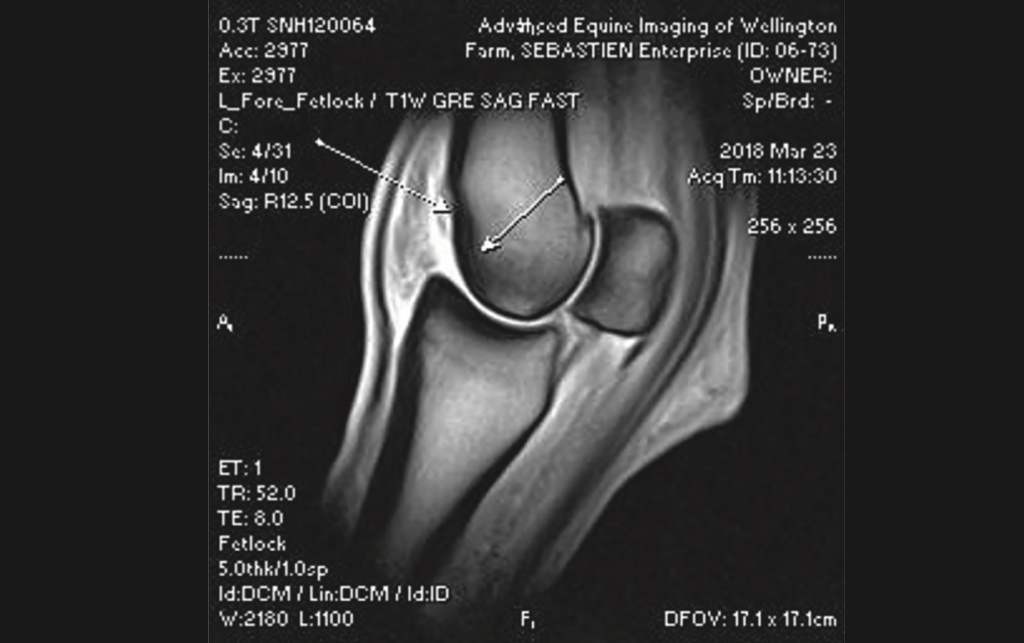
Rick Mitchell, DVM, MRCVS, DACVSMR, an owner of Fairfield Equine Associates and a founding member of ISELP, shared information about a “type of case seen by many of us” in a presentation based on a 2021 AAEP Sunrise Session on Redefining DJD Diagnosis, Refining Treatment and Mastering Client Communication. Specifically, he discussed a case on DJD in the fetlock. (Editor’s note: You can watch a video of that presentation with Drs. Mitchell and Kyla Ortved on EquiManagement.com by searching for “Redefining DJD Diagnosis.”)
About the Case
Here are some brief facts about the case:
- The patient was a 15-year-old Grand Prix dressage gelding competing at an international level.
- Mitchell had managed the horse for about 10 years.
- It developed a lameness of the left forelimb that blocked to a 4-point low volar and also blocked on a separate occasion to intra-articular anesthesia
- On visual examination he saw dorsal thickening of the fetlock with effusion.
- With hands-on examination, there was reduced range of motion on fetlock flexion, and the horse was lamer post-fetlock flexion.
- When ridden, the gelding had a mild to moderate lameness 2-3/5 in the left fore that was more apparent to the right.
- Mitchell noted that diagnostic blocks regionalized the area and MRI further defined the extent of inflammation and tissue damage.
- Radiographs showed subchondral sclerosis and some changes in the joint margins, indicating some advanced osteoarthritis.
- The horse was treated two times with ProStride intra-articularly followed by immediate extracorporeal shock wave therapy (ESWT) and a series of shock wave treatments afterwards.
- The horse had previous hock, back and fetlock issues during its career, and for those concerns the horse had received treatments such as corticosteroid injections, ProStride and Adequan i.m. (poly-sulfated glycosaminoglycan).
Therapeutics for DJD in the Fetlock
Mitchell said the horse became sound after a period of about six weeks and was back at work and was doing pretty well. “However, the lameness returned after five months,” he noted.
“At that time, we elected to use a poly-acrylamide product, Noltrex, with a small amount of triamcinolone acetate,” said Mitchell. “We did two injections that were one month apart. We continued to treat the horse periodically from medial to lateral over the dorsal aspect of the fetlock with ESWT.
“The horse became quite happy again and qualified and competed at the Olympic Games in Tokyo,” said Mitchell.
Mitchell said the horse had a “pretty bad joint, but with some of our newer techniques and technology, we were able to keep this horse in the show ring for a year to 1.5 years longer with it being comfortable and not having to live on medication.”








